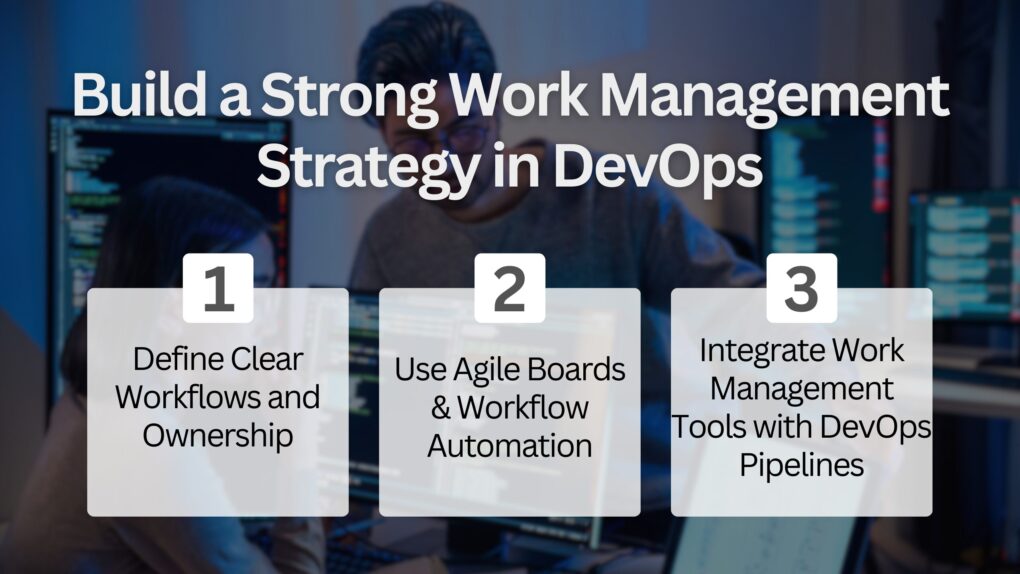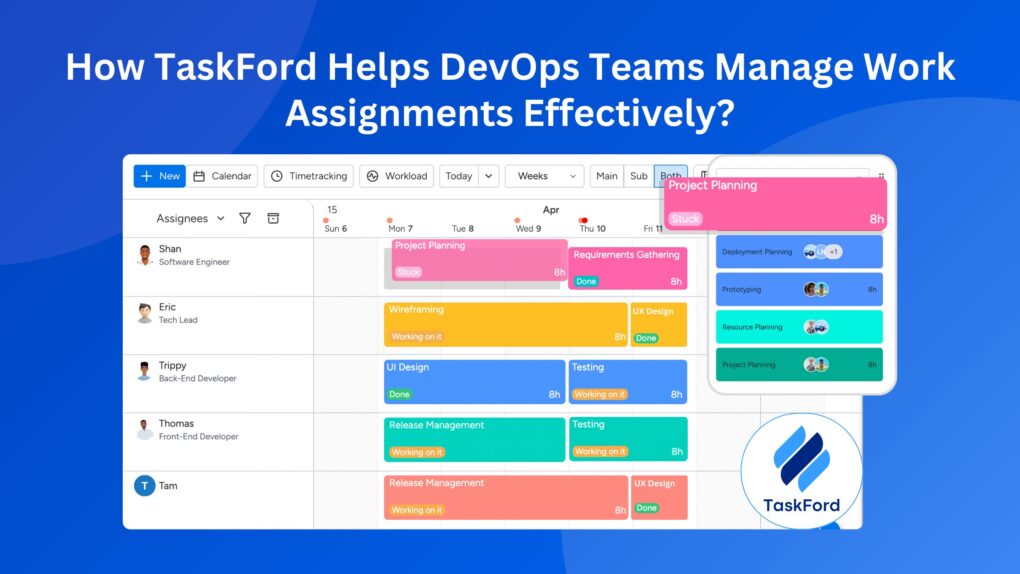DevOps is all about speed, collaboration, and continuous improvement. Teams are constantly juggling deployments, bug fixes, incident response, and sprint planning, all while keeping systems running smoothly. But with so much happening at once, things can get messy fast. Without a clear work management strategy, teams risk missed deadlines, confusion over responsibilities, and unnecessary bottlenecks.
In this post, we’ll break down why DevOps teams need better work management, what a solid strategy looks like, and how tools like TaskFord can help teams stay organized and efficient. Let’s dive in!
Understanding the Complexity of DevOps Workflows
DevOps isn’t just about CI/CD pipelines – it’s an intricate system of continuous planning, coding, testing, deployment, monitoring, and incident response. Each stage requires seamless coordination between multiple teams, from developers and IT operations to QA and security teams. Without a structured approach to managing this work, things can quickly spiral into chaos.
Imagine a scenario where a critical bug is discovered in production. The development team scrambles to push a fix, but without clear ownership, the QA team doesn’t know when to test it, and the operations team isn’t sure when to deploy. The result? Delays, miscommunication, and longer downtime.

Some common challenges DevOps teams face due to poor work management include:
- Lack of clear prioritization slows down releases.
- Unassigned or delayed tasks stall automation.
- Without structured workflows, critical issues take longer to resolve.
To keep things running smoothly, DevOps teams need a clear, structured way to manage work, ensuring tasks are properly assigned, progress is tracked, and teams stay aligned. That’s where an effective work management strategy comes in.
How to Build a Strong Work Management Strategy in DevOps
A well-structured work management strategy is essential for keeping DevOps teams efficient and aligned. Without clear workflows, tasks get lost, deployments slow down, and incident response suffers. Here’s how to build a strategy that keeps everything on track.

1. Define Clear Workflows and Ownership
One of the biggest challenges in DevOps is unclear task ownership. When responsibilities aren’t well-defined, important work can be delayed or duplicated. To avoid this, teams should:
- Map out workflows: Clearly define each step of the DevOps lifecycle, from planning to deployment.
- Assign ownership for critical tasks like:
-
- Who maintains and optimizes automation processes?
- Who responds first, and how is escalation handled?
- Who collects insights and ensures lessons are applied?
By ensuring every task has a designated owner, DevOps teams can move faster and reduce inefficiencies.
2. Use Agile Boards and Workflow Automation
Tracking sprints, releases, and DevOps tasks is essential for smooth operations. Agile boards like Kanban or Scrum help teams visualize progress, prioritize tasks, and improve accountability, ensuring work stays on track.
Workflow automation further reduces manual effort by streamlining deployment approvals, code merges, and incident tracking. Automated workflows ensure faster reviews, seamless integrations, and quicker responses to critical issues.
By combining Agile methodologies and automation, DevOps teams can eliminate inefficiencies, accelerate delivery, and focus on innovation rather than admin work.
3. Integrate Work Management Tools with DevOps Pipelines
DevOps work doesn’t happen in isolation, it involves multiple tools and platforms. A good work management system should integrate seamlessly with:
- Development tools: Jira, GitHub, GitLab for tracking issues and code changes.
- CI/CD platforms: Jenkins, Azure DevOps to monitor build and deployment status.
- Communication channels: Slack, Microsoft Teams for instant updates and alerts.
These integrations ensure that task updates, incidents, and sprint progress are automatically reflected in a central system, reducing manual updates and improving visibility across teams.
Choosing the Right Work Management Solution for DevOps
With DevOps teams managing sprints, deployments, incidents, and automation workflows, having the right work management solution is essential. A good tool should do more than just track tasks – it should help teams collaborate efficiently, automate repetitive work, and ensure balanced workloads. When selecting a work management solution, DevOps teams should prioritize tools that offer:
- Task Assignment & Tracking: Ensure clear ownership of development tasks, incident resolution, and sprint planning.
- Automation Capabilities: Reduce manual effort by integrating with CI/CD pipelines, monitoring tools, and deployment workflows.
- Collaboration Features: Enable cross-team communication between developers, IT, security, and QA to avoid silos.
- Time Tracking & Workload Balancing: Prevent team burnout by monitoring workload distribution and tracking time spent on critical tasks.
How TaskFord Helps DevOps Teams Manage Work Assignments Effectively?

TaskFord is a modern work management platform designed to help teams streamline task execution, automate workflows, and improve collaboration. While many DevOps teams excel at strategic planning, they often struggle with turning plans into actionable work and that’s where TaskFord comes in. It helps DevOps teams bridge the gap between planning and execution with features like:
- Task Assignment & Tracking: Ensure that CI/CD updates, incident responses, and post-mortem actions are assigned and completed on time.
- Seamless Collaboration: Keep developers, IT ops, and security teams aligned with real-time updates and shared workspaces.
- Workload & Time Tracking: Prevent team burnout by monitoring workloads and optimizing sprint planning.
- Keeping track of the project timeline: Manage milestones, sprint cycles, and release dates within a united Gantt Chart view.
By integrating TaskFord into their DevOps workflow, teams can stay organized, reduce bottlenecks, and accelerate deployment cycles without the chaos of mismanaged work.
Conclusion
A strong work management strategy is essential for DevOps teams to keep up with the fast-paced demands of continuous development, deployment, and incident response. Without structured workflows, teams risk missed deadlines, miscommunication, and inefficiencies that slow down progress and impact overall productivity. By defining clear workflows and ownership, leveraging Agile boards and automation, and integrating with DevOps pipelines, teams can streamline operations and eliminate unnecessary bottlenecks.
TaskFord bridges the gap between strategic planning and execution, helping DevOps teams manage task assignments, project timelines, workload distribution, and collaboration within a single platform. With its robust features, teams can stay organized, optimize resources, and accelerate their development cycles without the chaos of mismanaged work.

